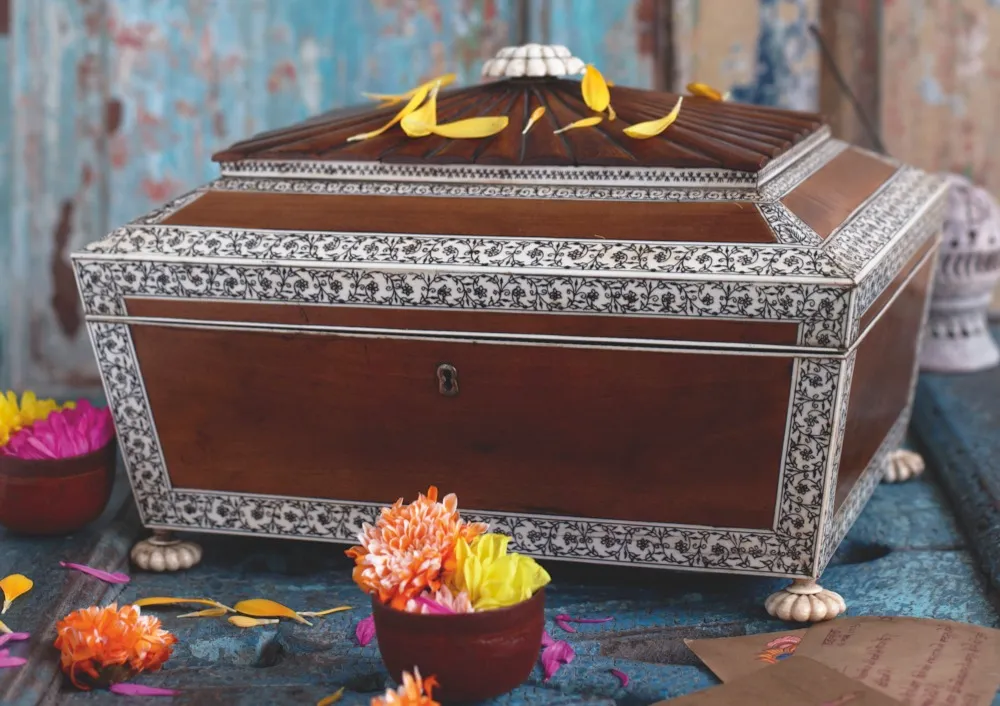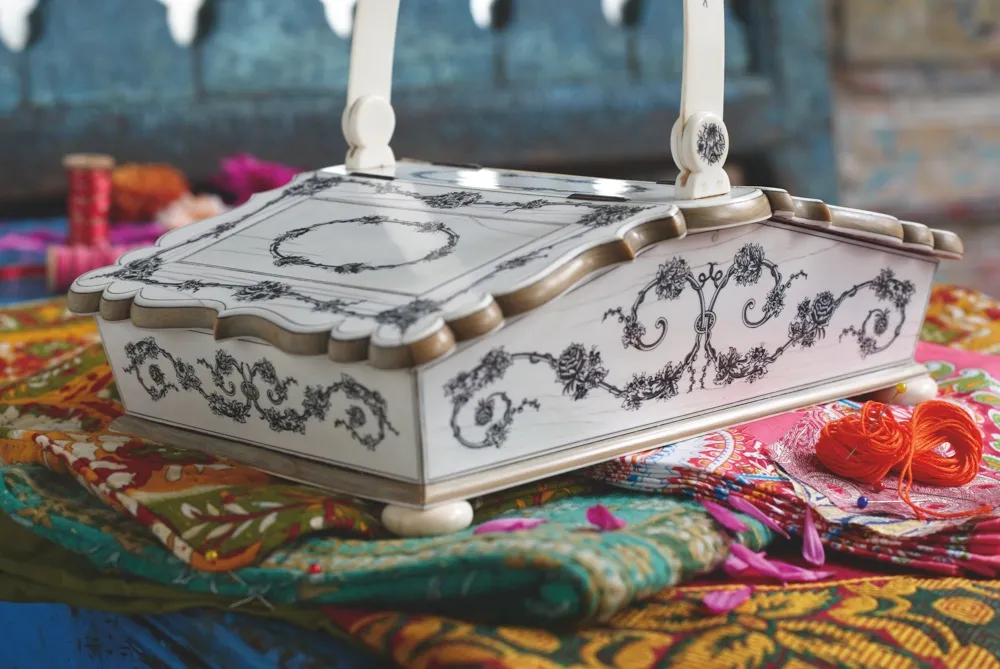Antiques and interiors lovers are never short of inspiration from India, long associated with intricately woven textiles and beautiful craftsmanship. British soldiers stationed in the colonies would historically send their wives Vizagapatam ivory, handmade in the Indian town of the same name...
What exactly is Vizagapatam work?
Vizagapatam work is the term used to describe pieces made by Indian craftsmen around the town of the same name on the Coromandel Coast of India throughout the 18th century and up to the mid 19th century.
Typically, it displays grey/black decoration on creamy white ivory, although styles changed over the years.
When was its heyday?
The popularity of Vizagapatam work is intrinsically tied up with its location – the town was a principal trading port between Europe and east Asia – and the companies that took advantage of that location to establish vastly profitable trade routes: the Dutch East India Company and the Honorable East India Company (HEIC).
An English textile factory was established in the town in the late 1680s and the HEIC established a base there three years later. Fast forward 100 years and the whole region was under the control of the British.

It is difficult today to understand the power and influence of the HEIC. In essence, it ruled vast swathes of the subcontinent, even raising its own army.
Vizagapatam must have been a fascinating, bustling place, with HEIC and private ships passing on their way to and from Canton in China and returning to England with shawls of bright chintz and ivories from India.
Following the Great Rebellion of 1857, the influence of the HEIC rapidly faded and, by the 1870s, was all but over. The market for Vizagapatam work was reduced to a trickle of lesser pieces.
Who bought it?
As more British people moved to the area, whether as merchants, governors, civil servants, clerks for the HEIC (as Robert Clive, later Clive of India, initially did) or soldiers, the demand for western-style furniture spread.

The very earliest Vizagapatam pieces from the late 1660s were chairs imitating the designs of English and Dutch furniture but local materials added an exotic feel.
We know that local British residents had pieces in their houses and, as returning dignitaries brought back large collections of Indian treasures, demand for a piece of the east burgeoned.
A vibrant export trade grew up, with pieces generally becoming smaller and more portable (chess sets, workboxes and mirrors) as time went on.
What type of pieces were made?
In the 17th and early 18th century, seat furniture and some spectacular pieces of case furniture were made.
Richard Benyon, the governor of Madras from 1735-44, brought back several wonderful things including a spectacular inlaid ivory bureau bookcase, still in the family seat at Englefield House, Berkshire, today.
By the end of the 18th century, the smaller size of the pieces produced dictated a change in style and technique. Instead of ebony, sheets of ivory were secured to the carcass by small ivory pegs before being engraved with designs.
Cottage scenes often appear on workboxes, in imitation of designs found on Tunbridge ware. By the late 19th century, inlay and cheaper overlay strapwork were in fashion again.

How much should I expect to pay?
Prices for the best quality Vizagapatam work are high – and rising. Even a copy of Amin Jaffer’s seminal book on the subject, Furniture from British India and Ceylon (V&A Publications, 2001), can now cost up to £200.
One of the highest prices ever achieved is over £950,000 for a magnificent early 18th-century bureau cabinet, sold in New York in 2005.
That’s not to say this field is completely out of reach to those of us with smaller budgets, though. Later, smaller pieces with less in the way of provenance can be bought at auction for under £1,000.
Since almost all pieces contain ivory, the export of which is subject to strict rules. It’s important to buy from reputable dealers and auction houses.
Specialists can also help warn you off fakes, which do exist, although most are fairly easy to spot – highlighting further the exquisite craftsmanship of the originals.

Where To Buy
Anthony Outred Antiques, 72 Pimlico Road, London, SW1W 8LS. 020 7730 7948
Butchoff Antiques, 154 Kensington Church Street, London, W8 4BN. 020 7221 8174
Hampton Antiques at Antiques at Heritage, 6 Market Place, Woodstock, Oxfordshire, OX20 1TA. 01604 863979
Richard Gardner Antiques, Eastrop House, 3 East Pallant, Chichester, West Sussex, PO19 1TR. 01243 533 772
Walpoles, 111 Portobello Road, Kensington, London, W11 2DY. 07831 561042
Auction houses including Bonhams (020 7447 7447), Christie’s (020 7839 9060), Sotheby’s (020 7293 5000) and Woolley & Wallis (01722 424500) often have Vizagapatam pieces
Where To See
The Clive Collection at Powis Castle, Welshpool, SY21 8RF. 01938 551944
The V&A Museum, Cromwell Road, London, SW7 2RL. 020 7942 2000
Words: Clive Stewart-Lockhart
Photography: Jo Henderson
Styling: Kiera Buckley-Jones
